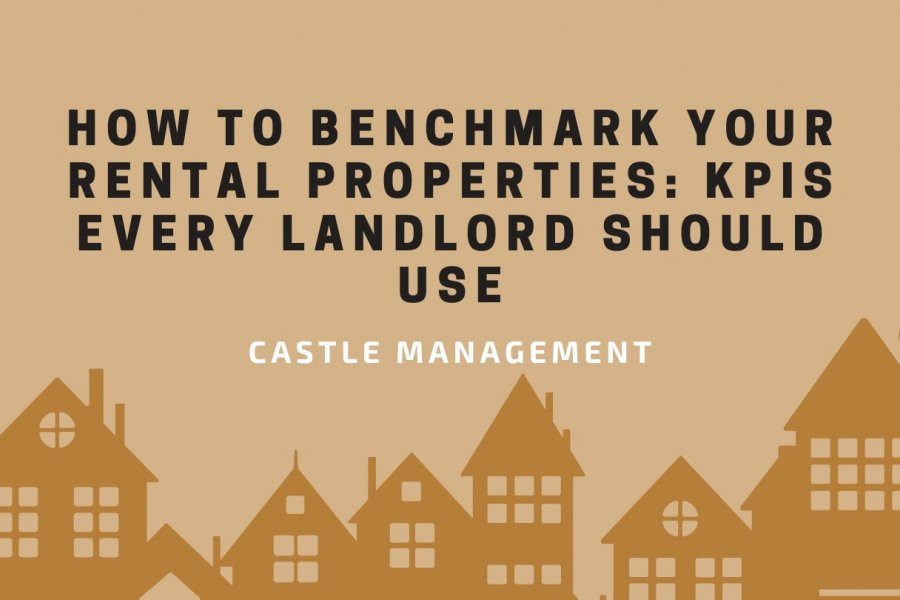
- Performance Tracking Builds Profitability: Monitoring income, expenses, and appreciation helps identify opportunities for growth and maximize long-term returns.
- Key Metrics Reveal Financial Health: KPIs such as cash flow, ROI, and NOI show whether your property is meeting financial goals and performing efficiently.
- Regular Analysis Prevents Surprises: Consistent benchmarking allows landlords to spot warning signs early, make data-driven decisions, and protect their investment.
- Informed Management Drives Success: Understanding and applying KPIs leads to smarter strategies, reduced risk, and stronger overall performance.
Keeping track of your investment property’s performance is one of the most important habits a landlord can develop. Despite what most people believe, real estate isn’t a completely passive, set-it-and-forget-it type of investment.
In reality, it requires regular maintenance, planning, and financial analysis. By monitoring income, expenses, and appreciation, landlords can identify areas for improvement, make smarter financial decisions, and maximize long-term returns.
Running the numbers regularly, such as calculating cash flow, return on investment (ROI), and capitalization rate, provides valuable insight into your property’s profitability.
These figures help determine whether your rental is meeting your financial goals or if adjustments are needed, such as raising rent, reducing expenses, or refinancing. Without consistent tracking and analysis, landlords risk missing warning signs or opportunities for growth.
If you haven’t been keeping track of your property’s performance consistently, then you’ve come to the right place! In this guide, our team at Castle Management will go over the basic KPIs every landlord should use to benchmark their properties.
Learn How We Can Help You Maximize Your Investment’s Potential!
What Are KPIs and Why Are They Important for Investors
Key Performance Indicators (KPIs) are measurable metrics that help investors assess how their investment is performing. In real estate, KPIs are useful to track the financial health and efficiency of an investment, providing a clear picture of profitability, cash flow, and overall return.

Common KPIs include metrics like occupancy rate, net operating income (NOI), cash-on-cash return, and tenant turnover rate. Each one offers valuable insight into different aspects of property management and investment performance.
Understanding and tracking KPIs is essential for making informed decisions. By regularly reviewing these indicators, investors can spot trends, address inefficiencies, and identify growth opportunities.
Essential KPIs Every Landlord Should Use
A landlord is not just a property owner, but also an investor. This means you must think strategically about how to maximize returns, minimize expenses, and grow the value of your asset over time. Here are some basic KPIs that can help you keep track of your investment’s performance:
1. Occupancy Rate
It’s important to know how often your property is rented out versus vacant. A high occupancy rate indicates steady income and tenant satisfaction, while a lower rate and frequent vacancies can signal pricing or marketing issues.
If you own a multi-family property, you should aim to calculate the occupancy rate of each unit, as well as of the property as a whole. This can help you identify the specific units that are underperforming.
Why Partner With Castle Management?
2. Vacancy Rate
The opposite of occupancy, the vacancy rate shows how long your property sits empty. It’s calculated by dividing the number of vacant units by the total number of units, then multiplying by 100 to get a percentage. Lower vacancy rates mean better cash flow and fewer income gaps.
3. Net Income
Your total rental income is a straightforward KPI but one of the most useful. It’s calculated by adding up all the income your rental generates, which includes rent from multiple units, parking or pet fees, and any additional services you charge for.

Understanding how much your investment is generating is the foundation of your investment’s profitability and helps you assess whether you’re charging competitive market rates.
4. Net Operating Income (NOI)
NOI is your total take-home after deducting all operating expenses. This includes maintenance markups, property management fees, property taxes, insurance, marketing costs, and repair costs. Calculating your NOI will help you understand your property’s ability to generate profit. A higher NOI typically signals a healthy investment.
5. Cash Flow
Cash flow refers to the money left after covering all your expenses (mortgage, taxes, insurance, maintenance). Positive cash flow ensures long-term sustainability and indicates your investment is truly profitable.
Learn More About Castle Management!
6. Capitalization Rate (Cap Rate)
Cap rate is calculated by dividing the NOI by the property’s value and multiplying by 100. This percentage is typically used in the buying process, as it helps you compare the profitability of different properties.
Generally, a higher cap rate means higher returns, but sometimes, it can also signify a higher risk. For example, finding a cheap property in a great neighborhood can mean the unit is in bad shape or that property values are going down.
7. Return on Investment (ROI)
If there’s a metric real estate investors love, it’s ROI. The return on investment KPI measures how much profit an investment generates over time. It’s calculated by adding up the overall profits generated, subtracting the total cost of the investment, then dividing this number by the cost of investment and multiplying it by 100 to get a percentage.
A higher ROI is a sign that an investment is profitable, while a low or, worse, negative percentage is a clear indicator that an investment is underperforming.

8. Gross Rent Multiplier (GRM)
This KPI is calculated by dividing a property’s price by its gross annual rent. It’s a quick way to evaluate whether a property is priced well compared to its income potential. A lower GRM is generally better. However, this shouldn’t be the only metric you take into consideration when pricing a rental unit.
9. Tenant Turnover Rate
Happy tenants are the key to a successful rental property. Retaining tenants for the long term results in a more stable source of income and higher financial security. Tenant turnover rates track how often tenants move out of your rentals. High turnover rates signify more vacancies and higher marketing costs.
10. Property Appreciation
This measures how much your property’s value increases over time. Even if cash flow is modest, strong appreciation can greatly enhance long-term returns. After all, steady appreciation helps increase your equity and net worth.
Discover Our Property Management Services!
Bottom Line
Investing in real estate is a numbers game. Beyond collecting rent and making repairs, successful landlords track performance and make data-driven decisions to ensure long-term profitability and financial stability.
Understanding key indicators, such as ROI, cash flow, cap rate, NOI, and appreciation, is essential to maintaining control over your investment, minimizing losses, and ensuring your real estate investment continues to thrive over time.
If you need help assessing the profitability of your Bay Area investment, contact Castle Management ! We are a full-service property management company dedicated to helping you with all your management needs.
